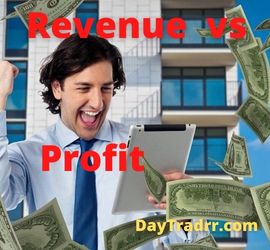What Is a Corporate Umbrella?
 A corporate umbrella is a strategy by large, successful brands to arrange smaller brand names under a single, unified corporate structure. The parent company is generally a large, successful brand name that oversees smaller companies belonging to the same corporation. The parent company adds structure and credibility to the smaller brands without needing to make day-to-day organizational decisions regarding products and services.
A corporate umbrella is a strategy by large, successful brands to arrange smaller brand names under a single, unified corporate structure. The parent company is generally a large, successful brand name that oversees smaller companies belonging to the same corporation. The parent company adds structure and credibility to the smaller brands without needing to make day-to-day organizational decisions regarding products and services.
The umbrella structure permits the subsidiaries to differentiate themselves from the parent corporation. Yet, all the while benefiting from the financial backing and assistance of a much bigger organization. Many multinational corporations use a corporate umbrella approach to diversify income streams and maximize profitability. Consider Procter & Gamble (PG). They distribute a variety of items under several brand names. For example, Bounty paper towels, Crest toothpaste, and Downey detergent. Each name brand functions independently of Proctor & Gamble while yet being a part of the greater corporation.
Corporate Umbrella – A Closer Look
A corporate umbrella is used to boost the legitimacy of smaller firms that are introducing new products and services. As a result, the subsidiary will be able to reach a bigger client base or audience that was previously unaware of its products and services. Transferring brand value to a smaller firm produces synergy for the larger organization. If separate divisions enhance their brand equity and financial status, the entire corporation benefits. They no longer need to invest more money and marketing efforts to build a favorable reputation for the umbrella brand.
Firms that supply consumer staple items frequently employ a corporate umbrella strategy. This structure helps them to handle and support several items used on a daily basis. Unilever, Pepsi, and Coca-Cola are among popular umbrella brands. For example, Pepsi handles the operations of its main soft drink company while also overseeing and promoting Frito-Lay snack food. It is not unusual for the ordinary customer to be unaware that a particular brand name is a subsidiary of a bigger parent firm. Sometimes the subsidiary’s brand name is so well-known that a consumer believes it is its own firm. Procter & Gamble, for example, has 65 brands, the vast majority of which are well-known to customers. However, investors must be aware of the parent firms and their brands. Investors may only acquire the stock of the parent company. The overall performance is dependent on the performance of all of its subsidiaries.
Corporate Umbrella Entity Types
An umbrella corporation must be organized in such a way that the umbrella may legally own the subsidiaries. The ultimate structure of the umbrella and subsidiaries should fit into a tiered umbrella framework. S corporations, C corporations, or limited liability companies (LLC), are the primary business types suitable for an umbrella structure.
C Corporation
C corporations are a type of business entity that may issue shares on the open market. However, they must also follow a number of regulations and procedures. Shareholders of C companies acquire shares in the corporation on exchanges such as the New York Stock Exchange. These companies have articles of incorporation, corporate by-laws, designated board members, and officials. Holding regular board meetings, publishing meeting minutes, and releasing financial statements are all part of the process of establishing this type of organization.
S Corporation
An S corporation, like a C corporation, is shareholder-owned and subject to a variety of formalities and regulations. However, unlike C corporations, S corporate shares cannot be traded on the open market. Further, there are a variety of limits on who can be qualified S corporation shareholders. S corporations vary from C corporations in that C corporations are subject to double taxation. However, S corporations are subject to pass-through taxes. This means that corporate earnings are not taxed at the corporate level. Instead, revenues and losses are passed on to shareholders, who pay their own taxes.
Limited Liability Company (LLC)
A Limited Liability Company, like an S corporation, has pass-through taxation. However, an LLC lacks the formalities of S and C corporations. An LLC can also own another LLC and be a shareholder in a C corporation. However, an LLC is not permitted to be a shareholder in an S company. Further, an LLC cannot issue shares. Therefore, there is no way for it to raise cash through share issuance.
Disadvantages of a Corporate Umbrella
Corporate umbrellas provide significant synergies for large organizations, but certain concerns remain. It becomes harder for the larger organization to manage all of the moving pieces of the corporation as well as the separate brands. If a subsidiary fails to sell a product or is involved in a controversy, it can reflect poorly on the company as a whole. This can lead to lost sales, a decline in share price, or a more serious action, such as replacing management. Ultimately, the parent corporation can be held accountable for the acts of its subsidiaries.
Customers who are not satisfied with one brand might influence the sales of other items marketed under the corporate umbrella. In this case, the brand equity is not isolated to a single firm, but to a number of them. As a result, the corporate umbrella approach necessitates a company’s attention to the quality of all its goods and personnel. Otherwise, customers and target audiences may come to connect any negative experience with the company brand as well as its subsidiaries.
If a parent business is having trouble with a subsidiary under its corporate umbrella, it will most likely sell it. The divestiture can take numerous shapes. For example, it might be sold to another parent company or a private equity group that believes it can turn around an ailing subsidiary’s fortunes.
Corporate Umbrella – Parent Company vs Holding Company
What is a parent company?
A parent company is one that owns a controlling or majority stake in another firm. This majority ownership gives the parent company authority over the subsidiary’s activities. Parent corporations have a choice in how they choose to manage. Some might be actively involved in the management of its subsidiaries. Others take a hands-off approach, at least in regards to day-to-day activities. Parent firms operate by owning over 51% of another company’s shares. This gives them complete control over the subsidiary’s activities. The parent firm can opt to modify a subsidiary’s present direction and mode of operation. Or, it can simply function in a hands-off capacity.
What is a holding company?
A holding company is a firm that does not engage in direct business activities, ventures, or other responsibilities for itself. Instead, it exists only for the purpose of acquiring assets in the form of the shares of other companies. In other words, the corporation does not engage in the purchase and sale of any goods or services. Instead, it was founded in order to obtain control of one or more companies or businesses. There are two primary routes for businesses to become holding companies. One method is to acquire enough voting stock or shares in another firm, granting it authority over its operations. The second method is to establish a new corporation from scratch and then keep all or a portion of the new firm’s shares.
Parent company vs holding company
A parent company frequently has direct control over the activities of its subsidiaries. However, a holding company does not. Holding corporations are typically formed to collect and hold a number of separate subsidiaries. Parent businesses can be conglomerates — a firm that owns and oversees a group of enterprises from several industries. This allows the parent company’s subsidiaries to collaborate across brands and profit from each other’s resources. Furthermore, by purchasing smaller firms, the parent company gains access to its workers and management. This allows them to bring on new talent for the benefit of the group as a whole.
Up Next: What Are Switching Costs?
 Switching costs are the barriers encountered when changing brands, services, or vendors. They include financial, effort, and time-based costs. Switching costs generally refer to what a consumer incurs as a result of changing brands, suppliers, or products. The most obvious switching costs are monetary in nature. However, there are also psychological, adjustment, effort, and time-based switching costs.
Switching costs are the barriers encountered when changing brands, services, or vendors. They include financial, effort, and time-based costs. Switching costs generally refer to what a consumer incurs as a result of changing brands, suppliers, or products. The most obvious switching costs are monetary in nature. However, there are also psychological, adjustment, effort, and time-based switching costs.
The cost of switching can influence a customer’s purchase decisions. Customers tend to repeat purchases from the same firm if switching costs are high. However, they may select a rival if switching costs are low. Due to taxes and differing prices for items or services, For example, consumers may incur switching costs when purchasing from a different store. These extra costs can be in the form of fees or different price points for accessories and services.




